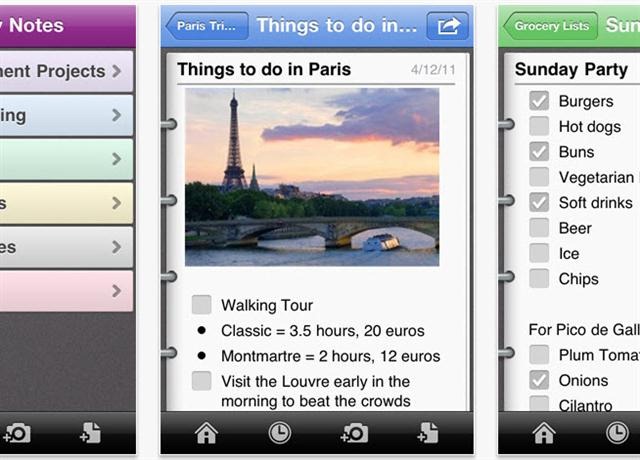OneNote feels like one of Microsoft's best hidden secrets; not enough people know about its existence.
OneNote started in 2000 with two Microsoft engineers slightly frustrated with the lack of tools to quickly, easily store all those snippets of information that aren't a document. Those things we scribble on notes, notepads, Post-It's etc. They came up with a tool that would let you capture anything (notes, video, images, links, documents, etc) without having to deal with any software restrictions. It would be as close to using paper (where you write anywhere you want, any way you want) as possible.
This became the infinitely useful OneNote.
The setup of OneNote is that of an collection of electronic binders with each binder having tabs and, within those tabs, pages and subpages.
That setup already gives most people a solid organizational framework but OneNote also comes with tags (what doesn't these days). OneNote can create summary lists of tagged items and, if so desired, can turn those lists into a page you can quickly print out and bring along.
WRITING & NOTE TAKING
One note's writing experience is quite unique and feels liberating.
You can add content at any part of the page. Just as is the case with a real binder and a real piece of paper, the paper is your canvas; write anywhere you want.
You're not limited by the flow of text, the limit being the last written line and how much white space you can create by pressing [enter] a bunch of times.
Each natural selection of content -- a picture, a list, a paragraph -- becomes a block you can move around the page, reorder, regroup, drag & drop.
Bullet point lists become outlines: use [tab] to make subsections, position your cursor in front of the bullet item ANC you can drag & drop the list item around.
Copy & paste something onto the page and if it makes sense the source gets noted with it.
ONENOTE IN THE CLOUD
OneNote 2010 can store it's notebooks online on Microsoft's Skydive service. This way you can sync your notes between computers and/or access them via Office on the web.
If you want cloud syncing and don't have OneNote 2010 (or have it and prefer not to use skydive) you can always change the storage place of the OneNote notebooks to a Dropbox folder.
ONENOTE MOBILE
OneNote is the ultimate tool to bring with you. Unfortunately, if you're not a Windows Mobile user, you're out of luck. And, frankly, the Windows Mobile version too is so-so; partly because Windows Mobile used to be so-so (note: this was on Windows Mobile 2005 " things may have changed). The mobile version also syncs via ActiveSync " which itself tends to not sync.
In 2010 Microsoft released OneNote for iPhone, free of charge even. Unfortunately and frustratingly however, the OneNote app is available in the USA only.
That leaves OneNote users in other countries with 3rd party application like MobileNoter which comes both with some limitations and extra costs.
ONENOTE USES
With the multiple notebooks, tabs, sections,pages, subpages and tags OneNote is a natural organizational fit for both the organized and the "whatever" crowd. It's an excellent tool to keep project notes, reference material and to do items together yet separated. Like most note/list tools it has almost infinite uses.
It likewise is a great storage depot for ideas. It's easy to capture ideas and work them out as you have time, adding more points to the page, adding a subpages if needed and, where needed, moving a growing collection of pages into their own tab or notebook binder.
With it's flexible setup towards blocks of content OneNote is also a very convenient writing environment. I've never grown fully comfortable doing all my writing in it though. There is a lot going on with the interface, for one. I'm someone who likes to write in an electronic environment that feels like a clean,organized desk. To me OneNote feels like a desk full of pens, rules, erasers, paperclips and what not.
If you feel at home in Microsoft Word as your main writing environment, OneNote will probably feel like a familiar friend.
The same physical world mirrored electronic setup that makes OneNote a great tool for organizing makes it much less usable as a data storage container. OneNote isn't meant to be used as a deep, dark database. A collection of notes, including reference, yes ... but an unlimited amount of incoming data on a subject? No.
I like and liked OneNote a lot for project notations. A sort of digital Moleskine. But Apple's iDevices broke that. Seamless sync, cross device and cross platform, is key these days. You need to enable the user to pick up your tool here, put it down and continue there. Microsoft OneNote doesn't do that for me. Your mileage may vary, especially if the gods allow you to use OneNote for iPhone.
Question: How do you use OneNote? Leave a comment by clicking here.

